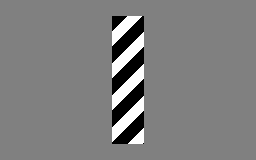Motion perception is the process of inferring the speed and direction of elements in a scene based on visual input. Monocular vision, or vision from one eye, can detect nearby motion; however, this type of vision is poor at depth perception. For this reason, binocular vision is better at perceiving motion from a distance. In monocular vision, the eye sees a two-dimensional image in motion, which is sufficient at near distances but not from farther away. In binocular vision, both eyes are used together to perceive motion of an object by tracking the differences in size, location, and angle of the object between the two eyes. Motion perception happens in two ways that are generally referred to as first-order motion perception and second-order motion perception.
First-Order Motion Perception
First-order motion perception occurs through specialized neurons located in the retina, which track motion through luminance. However, this type of motion perception is limited. An object must be directly in front of the retina, with motion perpendicular to the retina, in order to be perceived as moving. The motion-sensing neurons detect a change in luminance at one point on the retina and correlate it with a change in luminance at a neighboring point on the retina after a short delay.
Second-Order Motion Perception
Second-order motion perception occurs by examining the changes in an objects' position over time through feature tracking on the retina. This method detects motion through changes in size, texture, contrast, and other features. One advantage to feature-tracking is that motion can be separated both by motion and by blank intervals where no motion is occurring. This type of motion perception can be used to figure out how fast something is moving toward you—TTC, or "time to contact."
Visual Illusions
Visual illusions offer insight into how motion is perceived. The phi phenomenon is an illusion involving a regular sequence of luminous impulses. Due to first-order motion perception, the luminous impulses are seen as a continual movement. The phi phenomenon explains how early animation worked: it involves taking a series of still images that change slightly, and moving through them very quickly so that the image appears to be moving, rather than the series of still images that it is.
Another visual illusion is the barber pole illusion. In the barber pole illusion, a barber pole is rotated along the x-axis, but the diagonal stripes appear to move along the pole in a vertical fashion (y-axis) that is inconsistent with the actual direction the pole is turning in. The barber pole illusion also demonstrates how motion is perceived through first-order perception, which only sees movement as continual. The feature-tracking aspect of second-order perception does not perceive the aftereffects of a motion; it perceives movement as stroboscopic, or as a series of still images.

Barber pole illusion
In the barber pole illusion, a barber pole is rotated along the x-axis, but the diagonal stripes appear to move down the pole's y-axis in a way that is inconsistent with the actual direction the pole is turning in.